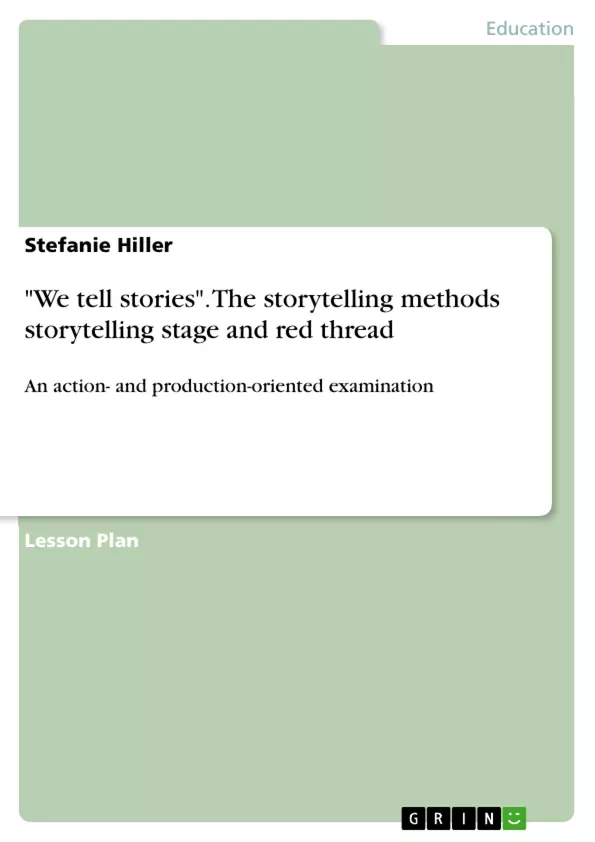Written lesson planning from the series "We tell stories". This includes an exploration of the `Red Thread' and `Narrative Stage' storytelling methods and a final presentation of the narratives to promote oral language use. The theme of the unit is "Practicing Narrative with the Narrative Stage." It involves practicing and reflecting on storytelling with the storytelling stage by having students talk about storytelling, following the storytelling tips, to encourage children to improve their storytelling and to expand oral language use.
Inhaltsverzeichnis (Table of Contents)
- Theme of the series
- Theme of unity
- Structure of the series
- 1st unit (45 min): "We tell a story in turn."
- 2nd unit: (45 min): "We develop narrative tips."
- 3rd unit: (90 min): "We get to know the narrative trick 'Red Thread'."
- 4. Unit: (45 min??): "We get to know the narrative stage."
- 5. Unit: (45 min): "We invent our own story for the narrative stage."
- 6th unit: (90 min): "We paint pictures of our history."
- 7th unit: (45 min): "We practice storytelling with the narrative stage."
- 8th unit: "We tell our stories of class 3b."
- Core concerns of the unit
- Central work order
- Reflection mandate or guiding impulse for the reflection phase
- Justification of the core concern from a didactic and methodological point of view
- Factual analysis
- Didactic analysis
- Curriculum
- Learning requirements of the students
Zielsetzung und Themenschwerpunkte (Objectives and Key Themes)
This lesson aims to expand children's narrative competence through guided storytelling practice and reflection. The students will focus on practicing their own stories in small groups, paying attention to narrative tips. The goal is to improve their storytelling skills and enhance their oral language development.
- Developing a narrative and conversation culture
- Encouraging metacommunication and the use of oral language
- Practicing structured storytelling with narrative methods
- Promoting creative use of language and speech motivation
- Enhancing children's ability to cooperate and work in groups
Zusammenfassung der Kapitel (Chapter Summaries)
The series "We tell stories" introduces children to various narrative methods, such as the 'Red Thread' and the 'Narrative Stage'. It starts with the students telling stories in small groups, focusing on active listening and content-related storytelling. The children then develop narrative tips by analyzing a negative narrative example, leading to a better understanding of oral language use and metacommunication. The series explores the 'Red Thread' method, allowing the students to create the conclusion of a story in group work and implement the storytelling using this method. This leads to learning structured storytelling. The students are then introduced to the 'Narrative Stage' through a presentation of the story "The Tiger Prince," further exploring structured storytelling.
In subsequent units, the students use the 'Red Thread' and stimulus images to invent their own adventure stories in small groups, expanding their creative use of language and promoting cooperation. They then prepare for their presentation by designing pictures for the 'Narrative Stage', encouraging speech motivation and creative language use. Finally, the students practice storytelling with the 'Narrative Stage', reflecting on their stories and applying the narrative tips. This unit focuses on encouraging the children to improve their narrative skills and expand their oral language use.
Schlüsselwörter (Keywords)
This lesson plan focuses on developing narrative competence in children, specifically through the use of storytelling methods such as the 'Red Thread' and the 'Narrative Stage'. Key themes include oral storytelling, narrative tips, creative language use, and group work. The lesson plan also discusses the importance of building a narrative and conversation culture in the classroom.
- Quote paper
- Stefanie Hiller (Author), 2009, "We tell stories". The storytelling methods storytelling stage and red thread, Munich, GRIN Verlag, https://www.grin.com/document/1193890



